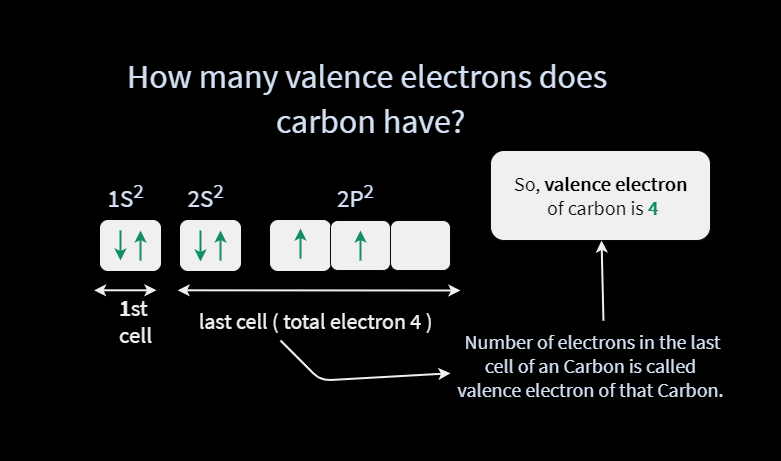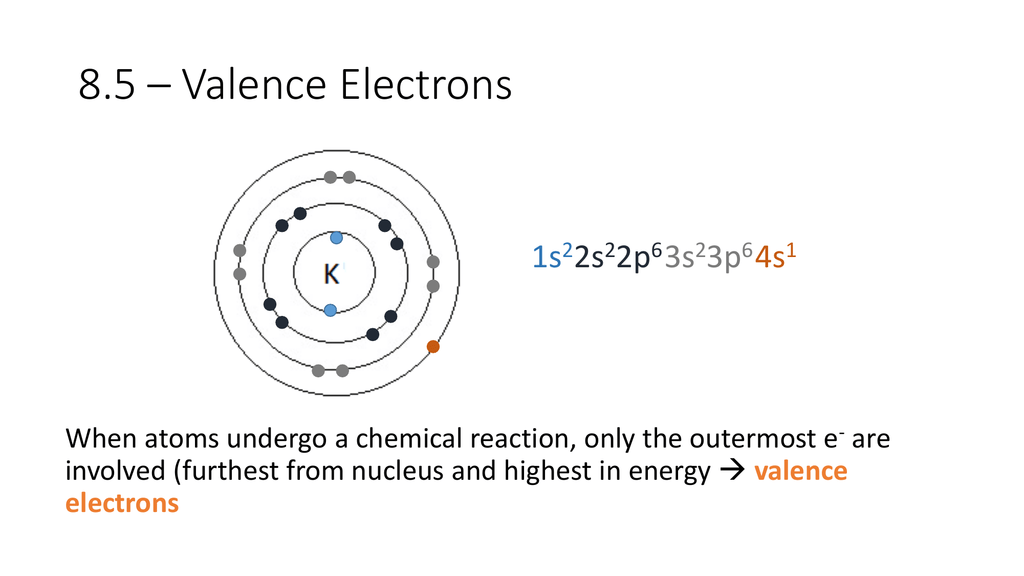- Valence Electrons
- Valence Electrons In Alcl3
- Valence Electrons Periodic Table
- Valence Electrons Periodic Table List
- How To Calculate Valence Electrons
The valence electrons are the electrons in the outermost electron shell of an atom. That is why elements whose atoms have the same number of valence electrons are grouped together in the Periodic Table. Generally, elements in Groups 1, 2, and 13 to 17 tend to react to form a closed shell, corresponding to the electron configuration s2p6. Get the free 'Valence Shell Calculator' widget for your website, blog, Wordpress, Blogger, or iGoogle. Find more Chemistry widgets in Wolfram Alpha. A way to find valence electrons without the periodic table is using the atomic number and drawing a diagram. The atomic number is how many protons and electrons the atom has. That means an atomic number of 8 (oxygen), has 8 protons and 8 electrons. Let’s draw it out as a simple diagram. Zirconium has four valance electrons, with two in the 4d level and two in the 5s level. This allows it to combine with other elements and ions in different configurations. It has valence charges of +2, +3 and +4. .Valence electrons are electrons in the outer energy level of an atom.
Valence Electrons

As was mentioned in a previous section of this chapter, electrons are highly important, because a specific subset of electrons, called valence electrons, are solely-responsible for determining how elements bond with one another. The number of valence electrons that are present in an atom can be determined from that atom's electron configuration. Valence electrons are found in the orbitals associated with an atom's highest occupied energy level. The remaining electrons, which are called inner shell electrons, do not participate in bonding and are, therefore, not important to study.
Consider sulfur's electron configuration, which was determined in the previous section and is replicated below.
1s22s22p63s23p4

Recall that the energy levels in an electron configuration are the leading red numbers that denote the start of a new energy level/orbital combination. Sulfur has electrons in the first, second, and third energy levels, as indicated by the leading red1, 2's, and 3's, respectively. Valence electrons are those found in the highest occupiedenergy level. Therefore, in this case, only those electrons associated with an energy level/orbital combination beginning with a 3 need to be considered. Since two energy level/orbital combinations begin with a 3, both orbitals are selected for further consideration:
3s23p4
The superscripts associated with these orbitals total to 6. Therefore, sulfur has 6 valence electrons.
Vmware fusion 11 for mac. Determine how many of nitrogen's electrons are classified as valence electrons. Nitrogen's electron configuration, which was determined in the previous section, is shown below.
1s22s22p3
Solution
Nitrogen has electrons in the first and second energy levels, as indicated by the leading red1 and 2's, respectively. Valence electrons are those found in the highest occupiedenergy level. Therefore, in this case, only those electrons associated with an energy level/orbital combination beginning with a 2 need to be considered. Since two energy level/orbital combinations begin with a 2, both orbitals are selected for further consideration:
2s22p3
The superscripts associated with these orbitals total to 5. Therefore, nitrogen has 5 valence electrons.
Determine how many of the electrons in each of the following elements are classified as valence electrons. Each element's electron configuration, which was determined in the previous section, is shown below.
- Neon
1s22s22p6
- Calcium
1s22s22p63s23p64s2
Valence Electrons
energy level/orbital combinations begin with a 2, both orbitals are selected for further consideration:
orbitals are selected for further consideration: 2s22p6
The superscripts associated with these orbitals total to 8. Therefore, neon has 8 valence electrons.Valence Electrons In Alcl3
orbital is selected for further consideration:Valence Electrons Periodic Table
4s2
The superscript associated with this orbital is a 2
associated with this orbital is a 2 . Therefore, calcium has 2 valence electrons.
. Therefore, calcium has 2 valence electrons.Valence Electrons Periodic Table List
While an electron configuration represents all of the electrons present in an atom of an element, chemists are only truly interested in an atom's valence electrons, since, as indicated above, those are the electrons that are solely-responsible for determining how elements bond with one another. Therefore, finding a 'shortcut' for determining how many valence electrons are present in an atom would be highly convenient. Such a 'shortcut' does, indeed, exist. In a previous section of this chapter, three systems for labeling the groups, or columns, on the periodic table were presented. The second system, which is called the 'A/B System,' was indicated to provide insight into the electronic character of elements found within that group.
Again, consider sulfur, S, which, based on its electron configuration, has 6 Mac os x download manager. valence electrons.
Sulfur is located in the 16th column of the periodic table. However, the 'A/B System' is used to label the main group elements. Group 16 is the 6th column in the main group, or 'A-Block,' columns of the periodic table and so is labeled as Group 6A. Note that sulfur's valence electron count matches its group number in the 'A/B System.' This connection applies to nearly all elements found in the main group columns of the periodic table. Helium is the only exception to this rule, as it is found in Group 8A, but only contains two total electrons. This inconsistency invalidates the 'A/B shortcut' method, and the electron configuration method must be employed to determine that both of helium's electrons are valence electrons.
Since the 'A/B System' group number corresponds to the number of valence electrons that are present in an atom, all elements found within the same column have the same number of valence electrons. Since an atom's valence electrons are solely-responsible for determining how elements bond with one another, this commonality in electronic character explains why all of the elements within the same group share similar properties.
How To Calculate Valence Electrons
Based on its location on the periodic table, determine how many of nitrogen's electrons are classified as valence electrons.
Solution
The 'A/B System' group number indicates the number of valence electrons that are present in an atom. Nitrogen (N) is located in the 15th column of the periodic table. However, the 'A/B System' is used to label the main group elements. Group 15 is the 5th column in the main group, or 'A-Block,' columns of the periodic table and so is labeled as Group 5A. Therefore, nitrogen has 5 valence electrons. (This answer is consistent with the solution to Example (PageIndex{1}).)
Based on the periodic table, determine how many of the electrons in each of the following elements are classified as valence electrons.
- Neon
- Calcium
- Answer a
- The 'A/B System' group number indicates the number of valence electrons that are present in an atom. Neon (Ne) is located in Group 18, which is labeled as Group 8A, using the 'A/B System.' Therefore, neon has 8 valence electrons. (This answer is consistent with the solution to Exercise (PageIndex{1}text{a}).)
- Answer b
- Calcium (Ca) is located in Group 2, which is labeled as Group 2A in the 'A/B System.' Therefore, calcium has 2 valence electrons. (Again, this answer is consistent with the solution to Exercise (PageIndex{1}text{b}).)
